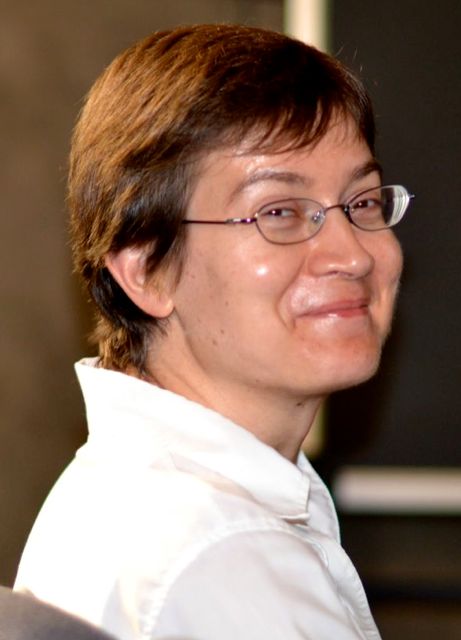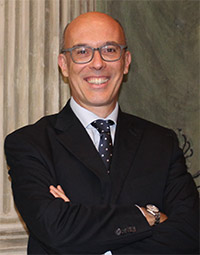Studying at the University of Verona
Here you can find information on the organisational aspects of the Programme, lecture timetables, learning activities and useful contact details for your time at the University, from enrolment to graduation.
Academic calendar
The academic calendar shows the deadlines and scheduled events that are relevant to students, teaching and technical-administrative staff of the University. Public holidays and University closures are also indicated. The academic year normally begins on 1 October each year and ends on 30 September of the following year.
Course calendar
The Academic Calendar sets out the degree programme lecture and exam timetables, as well as the relevant university closure dates..
For the year 2007/2008 No calendar yet available
Exam calendar
Exam dates and rounds are managed by the relevant Science and Engineering Teaching and Student Services Unit.
To view all the exam sessions available, please use the Exam dashboard on ESSE3.
If you forgot your login details or have problems logging in, please contact the relevant IT HelpDesk, or check the login details recovery web page.
Should you have any doubts or questions, please check the Enrollment FAQs
Academic staff
 nome.cognome[at]uniud.it
nome.cognome[at]uniud.it
 gino.mariotto@univr.it
gino.mariotto@univr.it
Mastrogiacomo Elisa
Todorov Velitchko
 velitchko.todorov@univr.it
velitchko.todorov@univr.it
 luca.vigano@univr.it
luca.vigano@univr.it
Study Plan
The Study Plan includes all modules, teaching and learning activities that each student will need to undertake during their time at the University.
Please select your Study Plan based on your enrollment year.
The Study plan 2007/2008 will be available by April 2nd. While waiting for it to be published, consult the Study plan for the current academic year at the following link.
Legend | Type of training activity (TTA)
TAF (Type of Educational Activity) All courses and activities are classified into different types of educational activities, indicated by a letter.
Image processing for bioinformatics (2009/2010)
Teaching code
4S02713
Teacher
Coordinator
Credits
6
Also offered in courses:
- Sound and image processing - IMMAGINI of the course Bachelor's degree in Computer Science
- Image Processing of the course Bachelor's degree in Bioinformatics (until 2008-2009)
- Digital Image and Sound Processing - TEORIA of the course Bachelor's degree in Multimedia Information Technology (until 2008-2009)
- Digital Image and Sound Processing - LABORATORIO of the course Bachelor's degree in Multimedia Information Technology (until 2008-2009)
Language
Italian
Scientific Disciplinary Sector (SSD)
INF/01 - INFORMATICS
Period
2nd Semester dal Mar 1, 2010 al Jun 15, 2010.
Learning outcomes
The course aims at providing the students with the basic tools that are required for image analysis and modeling with focus on bioinformatics. This will consist of the generalization of the main signal analysis methods to the 2D case, enriched with 2D specific tools. Among the main topics are the Fourier and Wavelet transforms, the multi-scale representation and analysis, color imaging, as well as techniques for image segmentation and classification.
Program
Among the main topics are
- Image acquisition
- Sampling in 2D
- Quantization noise
- 2D Fourier transform (space-frequency analysis)
- 2D Wavelet transform (multiscale representation)
- Edge detection
- Filtering (denoising, deblurring, image enhancement)
- Basics of mathematical morphology
- Image segmentation and performance assessment
- Color imaging
- Foundations of pattern recognition (classification, clustering)
- Applications to microarrays and biomedical images
Examination Methods
Oral and miniproject. However, the oral could be replaced by a written exam with the same structure.
Teaching materials e documents
-
 L1 - Introduzione
(pdf, it, 6619 KB, 19/04/10)
L1 - Introduzione
(pdf, it, 6619 KB, 19/04/10)
-
 L2 - 2D Discrete Fourier Transform
(pdf, it, 675 KB, 19/04/10)
L2 - 2D Discrete Fourier Transform
(pdf, it, 675 KB, 19/04/10)
-
 L2 - 2D Fourier Transform
(pdf, it, 1849 KB, 19/04/10)
L2 - 2D Fourier Transform
(pdf, it, 1849 KB, 19/04/10)
-
 L2 - Sampling Quantization
(pdf, it, 1015 KB, 19/04/10)
L2 - Sampling Quantization
(pdf, it, 1015 KB, 19/04/10)
-
 L3 - JPEG
(pdf, it, 1946 KB, 19/04/10)
L3 - JPEG
(pdf, it, 1946 KB, 19/04/10)
-
 L4 - Image enhancement: neighbor operations
(pdf, it, 8297 KB, 14/04/10)
L4 - Image enhancement: neighbor operations
(pdf, it, 8297 KB, 14/04/10)
-
 L4 - Image enhancement - part 1
(pdf, it, 2368 KB, 19/04/10)
L4 - Image enhancement - part 1
(pdf, it, 2368 KB, 19/04/10)
-
 L5 - Edge detection
(pdf, it, 3085 KB, 19/04/10)
L5 - Edge detection
(pdf, it, 3085 KB, 19/04/10)
-
 L6 - Region based proc. (Segmentation)
(pdf, it, 2822 KB, 26/04/10)
L6 - Region based proc. (Segmentation)
(pdf, it, 2822 KB, 26/04/10)
-
 L7 - Color Imaging
(pdf, it, 2686 KB, 03/05/10)
L7 - Color Imaging
(pdf, it, 2686 KB, 03/05/10)
-
 L7 - Color Vision
(pdf, it, 1920 KB, 03/05/10)
L7 - Color Vision
(pdf, it, 1920 KB, 03/05/10)
-
 L8 - Wavelets
(pdf, it, 880 KB, 19/05/10)
L8 - Wavelets
(pdf, it, 880 KB, 19/05/10)
-
 Lab. DWT
(zip, it, 855 KB, 25/05/10)
Lab. DWT
(zip, it, 855 KB, 25/05/10)
Type D and Type F activities
Training offer to be defined
Career prospects
Module/Programme news
News for students
There you will find information, resources and services useful during your time at the University (Student’s exam record, your study plan on ESSE3, Distance Learning courses, university email account, office forms, administrative procedures, etc.). You can log into MyUnivr with your GIA login details: only in this way will you be able to receive notification of all the notices from your teachers and your secretariat via email and soon also via the Univr app.
Graduation
List of theses and work experience proposals
| Stage | Research area |
|---|---|
| Correlated mutations | Various topics |
Attendance
As stated in the Teaching Regulations for the A.Y. 2022/2023, attendance at the course of study is not mandatory.

 +39 045 802 7949
+39 045 802 7949






















